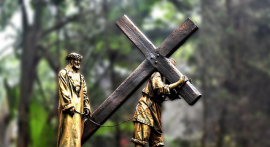
Volcanic ash rising from the erupting Mt. Ontake
On the 27th of September, Mount Ontake in Japan erupted resulting in the loss of 47 deaths and 19 other victims were reported to be missing. The Japanese government has dispatched fire fighters and Self Defense Forces to rescue civilians and evacuate the wounded to hospitals. It is expected that the death toll will continue to increase.
Professor Okada, a Japanese geologist announced that there were over 130 earthquakes in the area surrounding Mount Ontake due to unpredictable and unstable magma activity. Even the day before the mountain erupted, he reported that there were at least 3 to as many as 27 small volcanic earthquakes in the region. It is believed that Japan’s Meteorological Agency had misinterpreted the signs and announced that there are no larger problems in Mount Ontake.
According to Asia Economic, other experts have announced that this was the largest and most severe volcanic eruption in Japan after the Tokachidake volcano erupted in Hokkaido. At the time it is believed that over 144 people died or were missing.
Although it has been a week since the eruption, Japanese fire fighters and Self Defense Forces have been unable to properly carry out rescue and evacuation operations due to a new obstacle. JTBC reported that because of a recent rainfall in the Mount Ontake area, the immense amount of volcanic dust that was exhausted from the volcano hardened like cement, making it difficult for rescue teams to do their job. The Nagoya fire department announced the possibility of landslides caused by the continuous rainfall and the solidified volcanic dust.
To make matters even worst, Japan’s Meteorological Agency even announced that there is a typhoon approaching them and expected to hit Japan this Sunday. Officials of Nagoya-hyun, the region where Mount Ontake is situated announced that there are still at least 16 mountaineers who are trapped on the mountain. It is still unclear whether these citizens are still alive or not.
Meanwhile, Dr. Eichi Sato, who is in charge of the Disaster Medical Assistance Team (DMAT) in Nagoya announced that most of the people who were wounded because of the volcanic eruption were suffering from burns in their airways after inhaling the volcanic dust. The medical personnel who were dispatched however, according to Herald Economic, were lacking essential equipment to deal with such injuries such as endoscopes.
Until 1979, Mount Ontake was considered to be inactive. However in October of that year it went through a series of eruptions that exhausted around 200,000 tons of ash into the air. The Japanese government is under serious criticism from its citizens for being unable to properly predict the disaster and not being able to respond to the situation in Nagoya properly.












